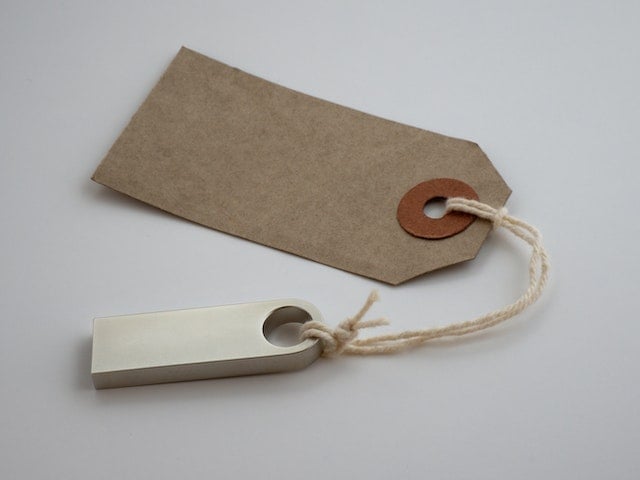Pricing. Such a simple word, and yet a profoundly complex topic for any business. It's one of the toughest things to get right. Set a price too high, and your fancy product stagnates on shelves. Too low, and you're leaving money on the table while signaling you've got a low-value offering.
But here's the nuance that too many marketers miss: pricing strategy is not one-size-fits-all. Different industries demand deeply different pricing approaches if you want your business to truly thrive.
As the founder of a marketing agency, I'm in the business of selling services. But over the years, I've advised clients across a wide range of sectors. Through that experience, I've seen the massive strategic advantages that come from really understanding how your industry dictates your optimal pricing approach.
So, let's dive in and explore the diverse world of industry-specific pricing.
The Manufacturing Mindset: Cost-Plus and Competitive Dynamics
.png)
Let's imagine you run a mid-sized manufacturing plant producing, say, automotive parts. Your world revolves around raw materials, production facilities, labor costs, and tight margins. Here's where your pricing strategy starts:
Cost-Plus Pricing: This is often a baseline strategy in manufacturing. You calculate your true cost of production per unit, add a desired profit margin, and bam – that's your starting point for setting a price. But that's just the start – the next factor is unavoidable.
Competitive Landscape: Manufacturing rarely exists in a vacuum. Unless you have some highly differentiated production process, you're bound by the realities of your market. If competitors sell similar parts for a certain price range, you might have to work backward to squeeze your cost structure or accept lower margins to stay competitive.
Example: Your cost-plus calculation suggests a selling price of $200 per unit for your automotive widget. Yet, three major competitors offer comparable widgets for $180-$190 per unit. This is your pricing reality check. You may need to consider ways to reduce production costs, increase efficiency, or find subtle product differentiators that could justify a slightly higher price point to your customers.
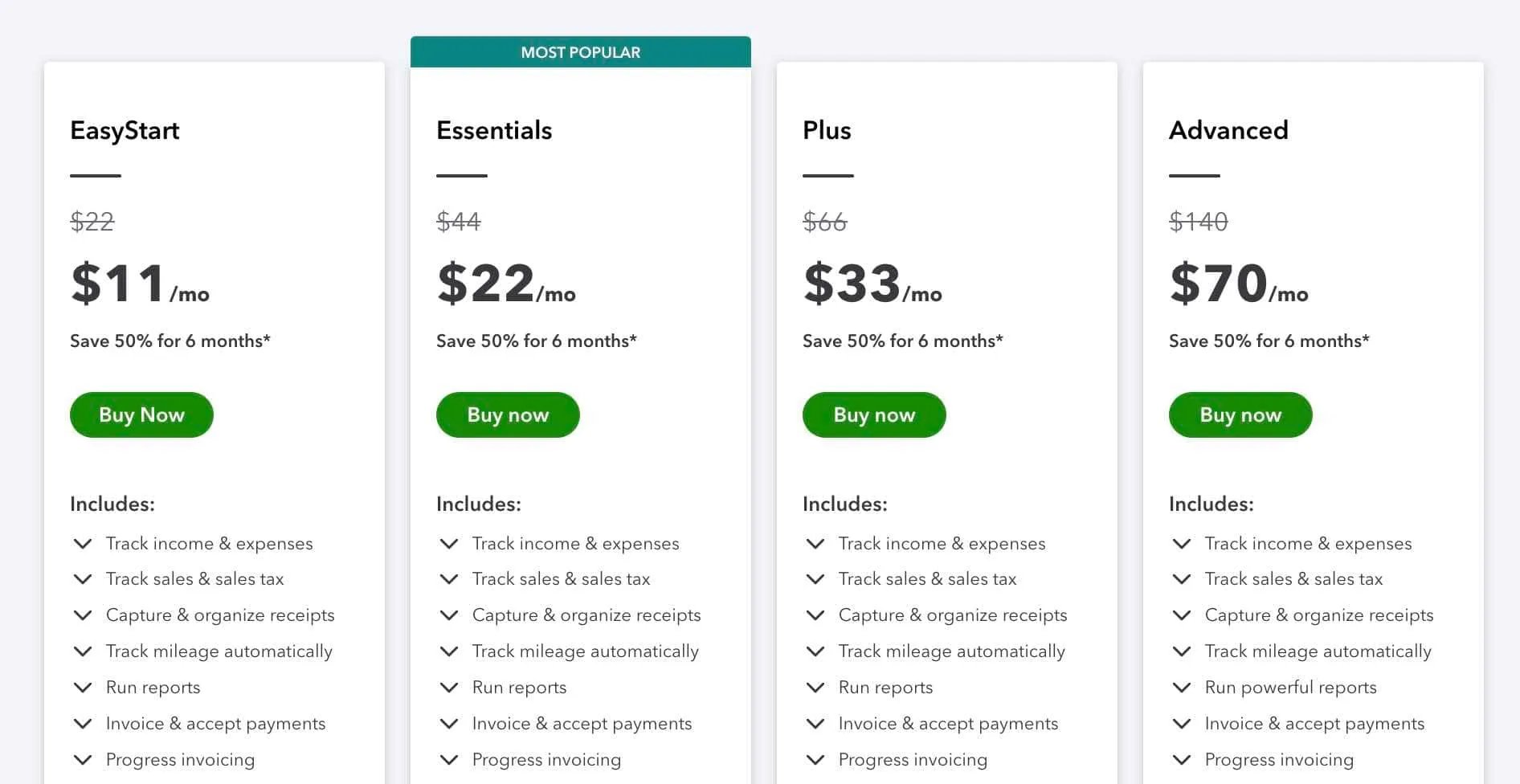
The SaaS Game: Value-Based and the Power of Tiers
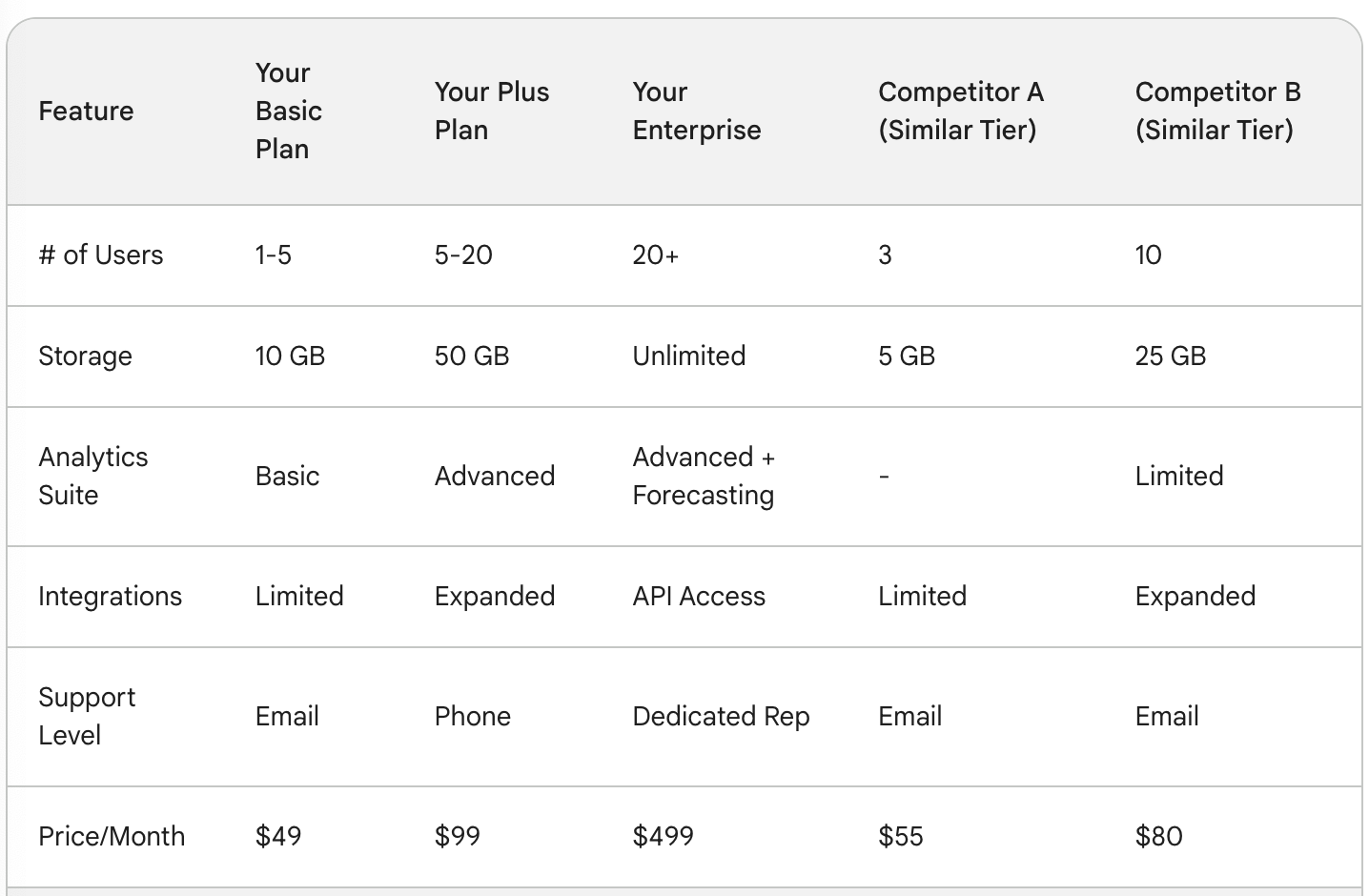
Now, let's shift gears entirely. You're no longer selling physical goods; you run a SaaS business providing productivity software with monthly subscriptions. Your cost structure is vastly different: heavy upfront R&D, with much lower costs per additional customer served. This shift changes the pricing game:
Value-Based Pricing: In SaaS, the “cost” of producing your software for each customer is relatively minor. Far more important is the value you deliver. Are you saving customers time, money, or streamlining their processes? Quantify that value, and it becomes a strong anchor for justifying your pricing.
Tiered Pricing: This is where SaaS businesses truly shine. Instead of a single price, you create different pricing tiers (e.g., Basic, Plus, Enterprise). Each tier gets a slightly different feature set, targeted at customer segments from individual users to large corporations. This lets you capture value across a wider range of customers willing to pay different amounts.
Example: After detailed analysis, you estimate your SaaS tool saves a typical small business approximately $5,000 per year in time and efficiency gains. This suggests a strong basis for charging far more than simply your cost-plus. You could implement tiered pricing like: Basic ($49/month), Plus ($99/month), Enterprise($499/month) – making the value proposition clear, and adjusting features for each segment.
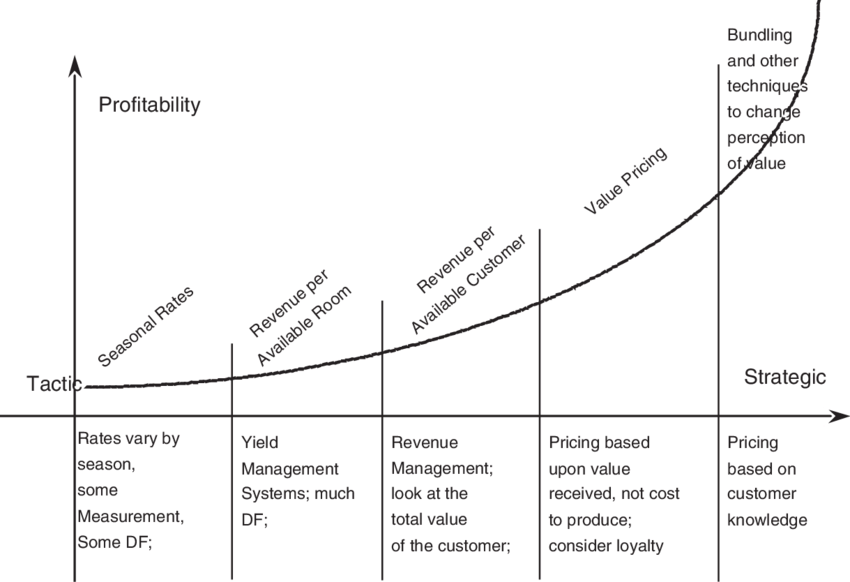
Travel & Hospitality: The Dynamic Pricing Dance
Let's say you're running a boutique hotel with a mixture of room types. Unlike manufactured goods or predictable SaaS subscriptions, your world is all about perishable inventory (unsold rooms are lost revenue) and constantly shifting demand. Pricing strategy needs to become fluid:
Dynamic Pricing: This is where technology is your friend. Dynamic pricing algorithms analyze market data in real-time – competitor prices, occupancy rates, seasonality, even special events happening in your city – and adjust your room rates accordingly. This lets you maximize revenue without manual price changes.
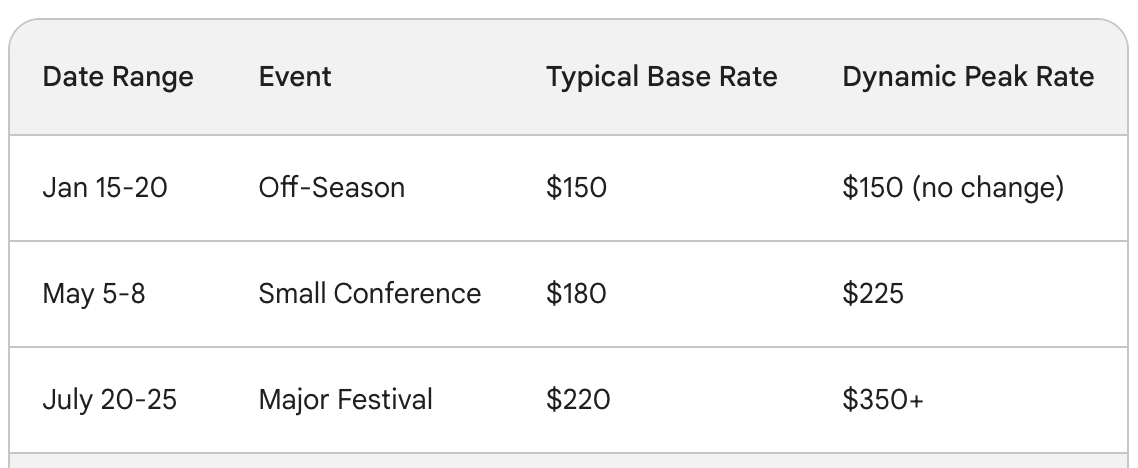
The Power of Upselling: Hotels excel at “ancillary” revenue. Think room upgrades, spa packages, etc. Train your staff to identify the right upsell opportunities to boost revenue for each guest. This requires understanding guest needs and aligning the upsell with a clear enhancement in the guest experience.
Example: Your dynamic pricing system suggests $200 per night as a base price for a standard room during the week. Approaching a summer weekend, with a major festival in town, that rate could dynamically surge to $350+ per night to capture increased demand. Meanwhile, guests checking in are offered upgrades to suites at a premium or targeted spa packages to unwind before the festivities.
Pharmaceutical Pricing: Ethics and Market Complexity

Let's step into a more controversial but hugely important arena. You're a marketer for a pharmaceutical firm with a newly developed cancer drug. Your pricing strategy is shaped by forces beyond the usual business considerations:
Innovation & Patents: R&D costs in pharmaceuticals are astronomical. Patents give you a limited period of market exclusivity, allowing you to recoup that investment and fund future innovations. This often means initially high prices that decrease as your patent protection period nears its end.
Healthcare Systems: Depending on the country you're operating in, your pricing strategy needs to navigate complex relationships with insurers, government programs, and healthcare providers. Single-payer systems (e.g., many European countries) might involve price negotiations on a national level, which differ wildly from battling with individual private insurers as is more common in the US.
Ethical Considerations: Lifesaving drugs carry a unique moral weight. There's always a public outcry over seemingly exorbitant prices. Your pricing must balance the real need for profit to sustain the firm with being perceived as accessible, particularly for those without strong insurance coverage. This might involve patient assistance programs or tiered pricing based on income level in specific markets.
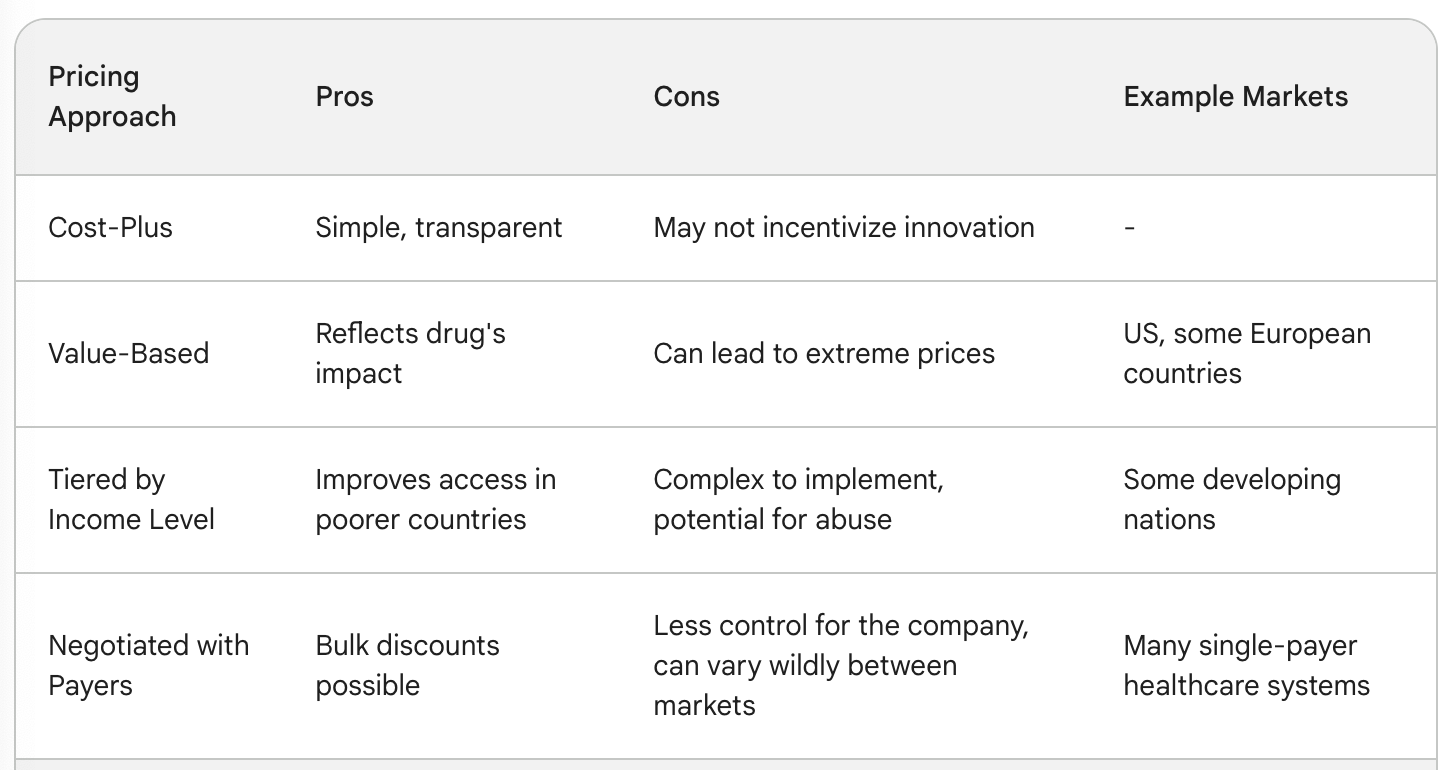
Example: Your new cancer drug shows significant improvements in survival rates. Due to R&D costs, you estimate a minimum price of $5,000 per month of treatment for adequate profitability. However, you might work alongside insurance companies to offer co-payment programs, or explore licensing deals with manufacturers in developing countries to make lower-priced versions accessible in those markets.
The Nuance is EVERYTHING
The examples above merely scratch the surface of industry-specific pricing. Let's hammer home the key takeaways for an experienced marketer like yourself:
Deeply Understand Your Costs: Whether it's physical production or software development, having an accurate grasp of your cost structure is essential for informed pricing decisions across all industries.
Know Your Market Inside-Out: Who are your competitors, and what's their pricing like? More importantly, identify the unique value you offer that differentiates you in the eyes of customers.
Pricing is Never Static: Market forces change, customer needs evolve. Pricing strategies should be revisited regularly, especially in industries using dynamic or tiered pricing models.
Data is Your Guide: Whether you're using sophisticated algorithms or simpler spreadsheets, utilize data to understand your market, sales trends, and the impact of price adjustments on your bottom line.
Pricing is the ultimate exercise in balancing art and science. By tailoring your strategy to your industry's unique dynamics, you'll gain a competitive edge that translates directly into profitability and sustainable growth for your business.
FAQ
1. My business doesn't fit neatly into a single industry category. What do I do?
It's normal for businesses to overlap multiple sectors. In this case, carefully analyze which industry dictates the majority of your costs and your primary customer base. Also, identify elements of other sectors present in your model, and borrow relevant pricing strategies from them as well. For instance, if you produce physical goods but sell with a subscription model, you'll need to understand manufacturing costs alongside SaaS-style value metrics.
2. How often should I revisit my pricing strategy?
There's no universal answer. Highly dynamic industries (like travel) might need quarterly or even more frequent reviews. More stable sectors might be fine with annual deep dives into pricing adjustments. Regardless, set a regular cadence and stick to it. Additionally, always review your pricing after significant changes – new product launches, competitor shifts, or major economic fluctuations.
3. Is cost-plus pricing ever suitable outside of manufacturing?
Yes, although not as the sole driver. Service-based businesses often factor in hourly rates with a desired profit margin – this is a form of cost-plus. The crucial point is to then layer it with an understanding of the value you deliver to clients. A client won't pay a high hourly rate simply because your internal costs are high if they don't perceive commensurate value.
4. What if my competitors have much lower prices?
Don't panic. First, dig deeper. Are they truly offering an identical product/service? Do they have a cost structure you can't match (e.g., manufacturing in a vastly cheaper location)? Are they loss-leading to gain market share, a strategy you can't sustain? Once you understand the 'why' behind their pricing, you can determine if you need to adjust, or if you can confidently emphasize the differentiation and value that justify your higher pricing.
5. How do I gather the data needed for informed pricing decisions?
This depends heavily on your industry. Here are a few starting points:
- Sales data: Analyze past sales patterns, price sensitivity, and which tiers (if applicable) are most popular.
- Customer surveys: Ask directly about price perception, pain points your product solves, and how they value specific features.
- Competitor analysis: Track their pricing publicly, and if possible, use resources or sales tactics to gather intel on any unpublished discounts or promotions they offer.
- Industry reports: Find sector-specific data on pricing trends and benchmarks.
6. Can I ethically use dynamic pricing in my industry?
Ethics is always industry-specific. Dynamic pricing is widely accepted in travel, but could be highly controversial for essential goods during a crisis. Consider: is your pricing transparent? Are changes based purely on demand, or also on factors like a customer's browsing history (which could be perceived as exploitative)? Always consider the public perception within your sector.
7. I don't have the resources for complex pricing models. What should I focus on?
Start with two fundamentals: accurately understanding your costs, and deeply understanding your ideal customer. From there, even simple pricing adjustments can be powerful. Consider limited-time promotions to test price sensitivity, or bundling features in a way that increases perceived value, allowing for a slightly higher price point.
8. How important is price transparency?
This varies by industry and customer type. B2B sectors often expect some price negotiation. However, B2C customers increasingly favor transparency. Hiding your pricing until far into the sales process erodes trust. If your pricing structure is complex, consider pricing calculators on your website, allowing customers to get a personalized quote easily.
9. Is there a one-size-fits-all pricing tool or software I should use?
Unfortunately, no. The right tool depends heavily on the size of your business, your industry's complexity, and the types of pricing models you utilize. Do your research on specialized tools within your sector, and take advantage of free trials to see if the interface and functionality are a good fit for your needs.
10. Where can I find more resources to help me refine my pricing strategy?
Seek out blogs, newsletters, and industry associations focused on your specific niche. Pricing is an ever-evolving field, and continuous learning is essential for maintaining your competitive edge.





